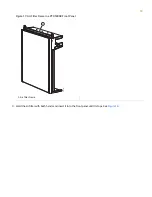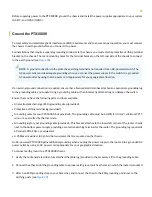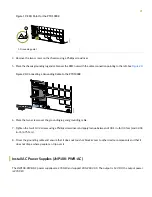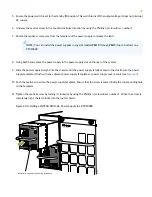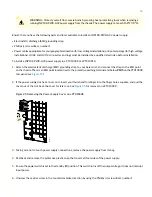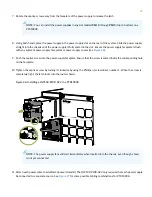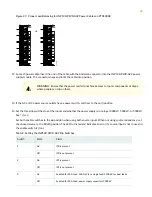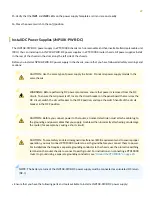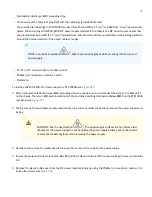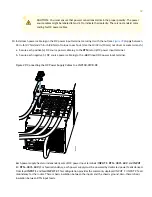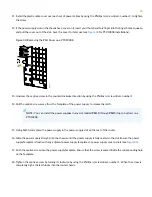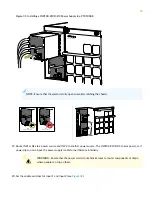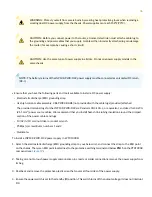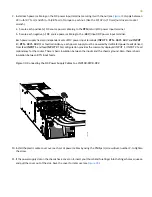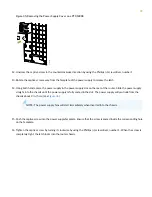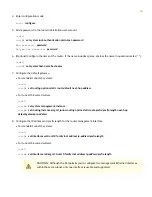
CAUTION:
You must ensure that power connections maintain the proper polarity. The power
source cables might be labeled (+) and (–) to indicate their polarity. There is no standard color
coding for DC power cables.
10. Install each power cable lug on the DC power input terminal, securing it with the nut (see
). Apply between
24 in.-lb (2.7 Nm) and 25 in.-lb (2.8 Nm) of torque to each nut. (Use the 13/32 in. [10 mm] nut driver or socket wrench.)
a. Secure each positive (+) DC source power cable lug to the RTN (return) DC power input terminal.
b. Secure each negative (–) DC source power cable lug to the –48V (input) DC power input terminal.
Figure 29: Connecting the DC Power Supply Cables to a JNP10K-PWR-DC
Each power supply has two independent sets of DC power input terminals (INPUT 1: RTN –48V/–60V: and INPUT
2: : RTN –48V/–60V). For feed redundancy, each power supply must be powered by dedicated power feeds derived
from feed INPUT 1 and feed INPUT 2. This configuration provides the commonly deployed INPUT 1 / INPUT 2 feed
redundancy for the router. There is basic insulation between the inputs and the chassis ground. Also, there is basic
insulation between RTN input feeds.
32

